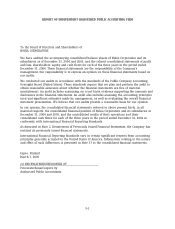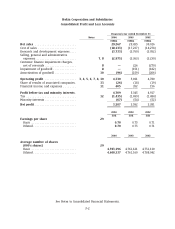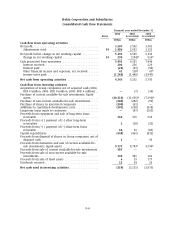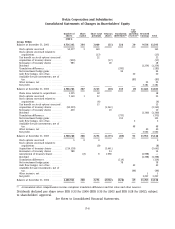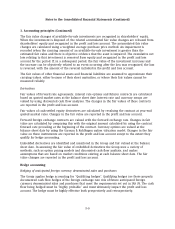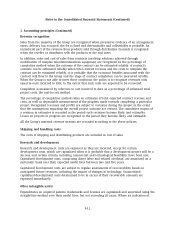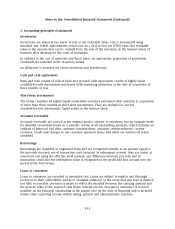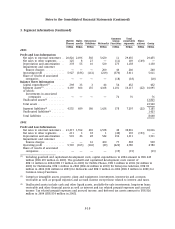Nokia 2004 Annual Report Download - page 136
Download and view the complete annual report
Please find page 136 of the 2004 Nokia annual report below. You can navigate through the pages in the report by either clicking on the pages listed below, or by using the keyword search tool below to find specific information within the annual report.Notes to the Consolidated Financial Statements (Continued)
1. Accounting principles (Continued)
Revenue recognition
Sales from the majority of the Group are recognized when persuasive evidence of an arrangement
exists, delivery has occurred, the fee is fixed and determinable and collectibility is probable. An
immaterial part of the revenue from products sold through distribution channels is recognized
when the reseller or distributor sells the products to the end users.
In addition, sales and cost of sales from contracts involving solutions achieved through
modification of complex telecommunications equipment are recognized on the percentage of
completion method when the outcome of the contract can be estimated reliably. A contract’s
outcome can be estimated reliably when total contract revenue and the costs to complete the
contract can be estimated reliably, it is probable that the economic benefits associated with the
contract will flow to the Group and the stage of contract completion can be measured reliably.
When the Group is not able to meet those conditions, the policy is to recognize revenues only
equal to costs incurred to date, to the extent that such costs are expected to be recovered.
Completion is measured by reference to cost incurred to date as a percentage of estimated total
project costs, the cost-to-cost method.
The percentage of completion method relies on estimates of total expected contract revenue and
costs, as well as dependable measurement of the progress made towards completing a particular
project. Recognized revenues and profits are subject to revisions during the project in the event
that the assumptions regarding the overall project outcome are revised. The cumulative impact of
a revision in estimates is recorded in the period such revisions become likely and estimable.
Losses on projects in progress are recognized in the period they become likely and estimable.
All the Group’s material revenue streams are recorded according to the above policies.
Shipping and handling costs
The costs of shipping and distributing products are included in cost of sales.
Research and development
Research and development costs are expensed as they are incurred, except for certain
development costs, which are capitalized when it is probable that a development project will be a
success, and certain criteria, including commercial and technological feasibility, have been met.
Capitalized development costs, comprising direct labor and related overhead, are amortized on a
systematic basis over their expected useful lives between two and five years.
Capitalized development costs are subject to regular assessments of recoverability based on
anticipated future revenues, including the impact of changes in technology. Unamortized
capitalized development costs determined to be in excess of their recoverable amounts are
expensed immediately.
Other intangible assets
Expenditures on acquired patents, trademarks and licenses are capitalized and amortized using the
straight-line method over their useful lives, but not exceeding 20 years. Where an indication of
F-11


